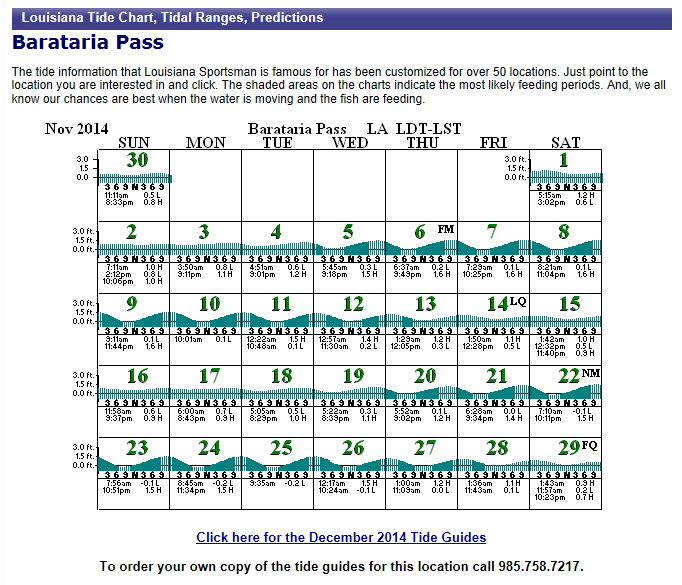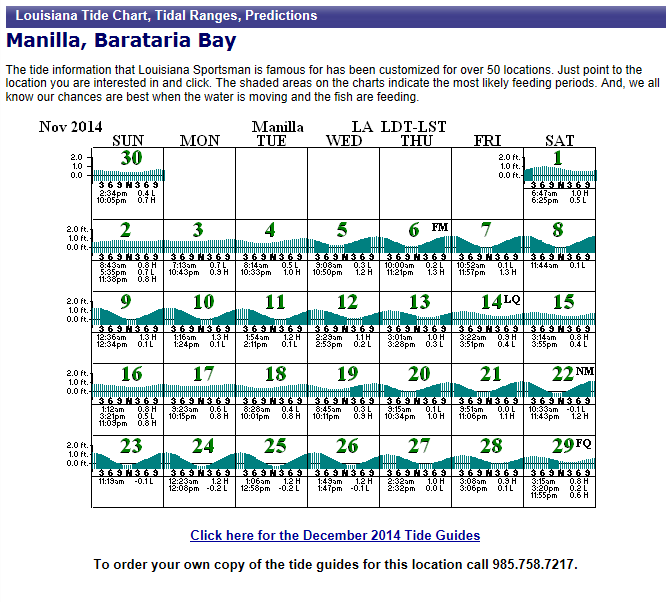 Christmas is upon us! From Santa and colder weather, to
presents and lights, you can’t turn your head without a reminder that the
season of giving is here. It’s a joyous
time of year when families get together with friends to celebrate the birth of
our Lord, Jesus Christ, and my family is no exception. Tomorrow we will be leaving for New Orleans
to enjoy a 9-day visit with my parents, as well as my visiting sister and her
family. I assure you that it will be a high energy environment with no shortage
of squeals and giggles by the 5 kids running around the house. In short, it’s
going to be a lot of fun and we can’t wait.
However, over the last couple of weeks, I’ve been reminded by Mariah
Carey and other Christmas novelty songs about what “I want for Christmas.”
According to Mariah, all she wants for Christmas is “You”, however, Spike Jones
and his City Slickers only want their “two front teeth.” Me, on the other hand - All I want for
Christmas is a 12lb trout.
Christmas is upon us! From Santa and colder weather, to
presents and lights, you can’t turn your head without a reminder that the
season of giving is here. It’s a joyous
time of year when families get together with friends to celebrate the birth of
our Lord, Jesus Christ, and my family is no exception. Tomorrow we will be leaving for New Orleans
to enjoy a 9-day visit with my parents, as well as my visiting sister and her
family. I assure you that it will be a high energy environment with no shortage
of squeals and giggles by the 5 kids running around the house. In short, it’s
going to be a lot of fun and we can’t wait.
However, over the last couple of weeks, I’ve been reminded by Mariah
Carey and other Christmas novelty songs about what “I want for Christmas.”
According to Mariah, all she wants for Christmas is “You”, however, Spike Jones
and his City Slickers only want their “two front teeth.” Me, on the other hand - All I want for
Christmas is a 12lb trout.
“Wow, Chris…that’s pretty silly, a 12lb trout!?!?” you might
say with bewilderment.
Yes, a 12lb trout…here’s why. This past April, a 30.5”, 11lb
trout with a 17” girth ate a Top Dog I presented on a rainy, windy day down in
Corpus Christi, and it was the most magical event that has ever happened to me
in my angling career. From the hit to the events that followed, the details that
surround landing that trout remain vivid in my mind, and continue to be the
driving force in hopes if replicating such an accomplishment. My bud Sam Davis, who writes for Mississippi
and Louisiana Sportsman, published the story in the Jun copy of the magazine,
and although he did a remarkable job of capturing the accomplishment, his
800-words afforded by the editor didn’t capture everything. So, during the
holiday, a holiday of reflection, I’d like to reflect back on that trout and in
my best Paul Harvey voice provide, “The rest of the story.”
 When I found out we were leaving Biloxi for San Antonio, I
wasn’t thrilled about the move. Biloxi,
over the course of 4 years, had become home for my family. After all, not many
military families can say that their children were born in the same place, let
alone the same room of the same hospital.
Additionally, both my military career, as well as my angling career, we’re
both going really well. Professionally, I was made second-in-charge of a
squadron of about 200 people and off-duty, my charter business, was seeing an
increase of booked trips. However, like
all those I serve with, it boils down to sacrifice and this move was no
different. I shut down my charter
business, told our friends goodbye and relocated to Randolph Air Force base, TX. The first month and a half in San Antonio was
incredibly rough, to say the least. We lived in a 2 bedroom hotel suite for
almost 2 months while we waited for on-base housing to “open up”, and the
shortage of space, free-time and the unknown of a new city/job/life weighed
heavy on my family. In short, I almost
lost it all in those two months, but I thank God everyday that my wife was
courageous enough to stick it out. Fast forward
2 months, and we were so excited to move into our house on-base, that before we
signed for the house, while it was vacant, we use to bring the kids and just
lay on the hardwood floors and listen to the kids chase each other around. It was awesome to hear them happy again and
now our life can get “back to normal.”
When I found out we were leaving Biloxi for San Antonio, I
wasn’t thrilled about the move. Biloxi,
over the course of 4 years, had become home for my family. After all, not many
military families can say that their children were born in the same place, let
alone the same room of the same hospital.
Additionally, both my military career, as well as my angling career, we’re
both going really well. Professionally, I was made second-in-charge of a
squadron of about 200 people and off-duty, my charter business, was seeing an
increase of booked trips. However, like
all those I serve with, it boils down to sacrifice and this move was no
different. I shut down my charter
business, told our friends goodbye and relocated to Randolph Air Force base, TX. The first month and a half in San Antonio was
incredibly rough, to say the least. We lived in a 2 bedroom hotel suite for
almost 2 months while we waited for on-base housing to “open up”, and the
shortage of space, free-time and the unknown of a new city/job/life weighed
heavy on my family. In short, I almost
lost it all in those two months, but I thank God everyday that my wife was
courageous enough to stick it out. Fast forward
2 months, and we were so excited to move into our house on-base, that before we
signed for the house, while it was vacant, we use to bring the kids and just
lay on the hardwood floors and listen to the kids chase each other around. It was awesome to hear them happy again and
now our life can get “back to normal.”
Corpus is a two and a half hour drive from my house. Most of
the time, I’ll stay at the Navy lodge on Corpus Naval Air Station, and make two
days out of it, but on April 17, 2014 I was going for an out and back. When I
woke up that morning I almost cancelled my trip because the wind was blowing so
hard, however an approaching front had me intrigued enough to go…after all, I
needed some “saltwater therapy.” When I
got to my first spot, a spot that consistently produces numbers of fish, I
noticed that the hard East wind was playing to my advantage of making long cast
and keeping a tight line, but more importantly had the water level higher than
I remembered from my trips that previous fall.
As a result, I quickly caught a limit of quality trout and played a
little catch and release until it started to rain.
By this point, it’s only 0930, and there was no way I was
heading home, so soon. So I decided to
clean my quarry and go “explore” the spots I found in January, especially with
the high water. When I got out of my
truck at my other spot, it was raining sideways, but like the other spot, a
hard east wind meant long cast and a tight line, after all I caught my limit
already so anything extra is lagniappe.
When I made my way onto my flat, I noticed the water was very milky, and
what was shin to knee deep in January was Knee to thigh deep, a situation Capt
Mike referred to as the “money zone.”
Now with confidence in my spot and my Chicken of the “C” Down South Lure
I had wreaked havoc with all morning, I waded into my angling apex. It started
the same as in Jan, with nothing to show for my hour and a half worth of effort.
So wanting to cover more area, I decided to throw a MirrOlure Top Dog. As I was
walking down my flat I remember the waves cresting over my Top Dog and for
periods of time would take it from view. After about a half hour, I made a long
cast…twitch…..twitch….twitch….boom!!! As
I looked in amazement I saw a wall of water swirl on my bait, and I felt the
tension and gave my CastAway Skeleton wader’s special everything she had. About
two or three cranks into the fight, she gave me a glimpse, and I wasn’t
disappointed. She shook her head 3 or 4 times so violently and her gills flared
so wide, that I would
compare it to taking a tin coffee can and shaking it as hard
as you can while half submerged. As she did, she tried to jump, but couldn’t
and instead fell backwards like she was a pig wallowing in mud. From that
moment on, she stripped a few small sets of drag, but cruised across the flat,
as if to say, “this is my home and I’m comfortable staying right where I am.” My heart at this point is beating so hard,
the adrenaline rush of the moment, seemed to slow everything down and I
remember telling myself to focus on “keeping a high rod tip with tension at all
times.” I made my way to the bank to beach her and she was content following me
until the last 5 yards or so. When I had her back out the water she made one
more bee-line for open water, but I calmly/clumsily followed her…and at that
point gave me her life. “I did it!” The biggest trout I had ever caught was
lying on the beach. “I thanked God!” as I reached down to put my hand under her
gill plate, and I remember saying “this fish is 10lbs!” In excitement, I ran as
fast as I could to my truck to instantly get her weight on my boga. After almost tripping a half dozen times on my
way to the truck, I layed her in the bed and snapped a few pictures with my
phone, and sent them to my buddy’s and said, “This is what I just caught.” At
this point, I’m overcome with excitement and sleep deprivation and still didn’t
have a weight on her, so I got my Boga grip and watched as the line teetered in
and out at 11lbs. At this point, my phone is getting responses saying, “Nice
trout” and “Good job.” After cautiously
knocking on a car window to get another picture, I shot the picture and another
text, saying “11lbs!!!” My phone started ringing like it was insurance call
center. I couldn’t believe it, I knew these fish existed, but they were more
appropriate for magazines with high glossed pages and fictitious places, but
not in my hands and visible with my own two eyes. After spending 10 minutes trying to revive
her, she was gone, but she gave me new life as an angler to always pursue the
impossible and “never give up”.
 The 2 and half hour drive back to San Antonio felt like a
trip around the block, and my phone had no shortage of texts and phone calls which helped in that respect.
After I got her home and shared the excitement with my wife and kids, I took
some more measurements for a replica mount.
Now I decided to clean her, and while doing so, found out that she had a
15” trout half-digested in her belly. This was truly a remarkable discovery in
such a remarkable fish!
The 2 and half hour drive back to San Antonio felt like a
trip around the block, and my phone had no shortage of texts and phone calls which helped in that respect.
After I got her home and shared the excitement with my wife and kids, I took
some more measurements for a replica mount.
Now I decided to clean her, and while doing so, found out that she had a
15” trout half-digested in her belly. This was truly a remarkable discovery in
such a remarkable fish!
In the days and weeks after the catch, I still couldn’t
believe what had happened. People and friends continued to be happy and
supportive. I was obviously happy because
it’s the reason we all fish…for lifelong memories. So as we all get ready to open gifts, remember
that the only pricesless gifts are the memories you make in life. So next time
I’m in line at the mall for a picture with Santa, and he asks what “I want for
Christmas?” You can bet my answer won’t be for any present or gift, but instead
for the lifelong memories associated with a 12lb trout.
Tight Lines, God Bless and Merry Christmas…He is the reason
for the season!




















































